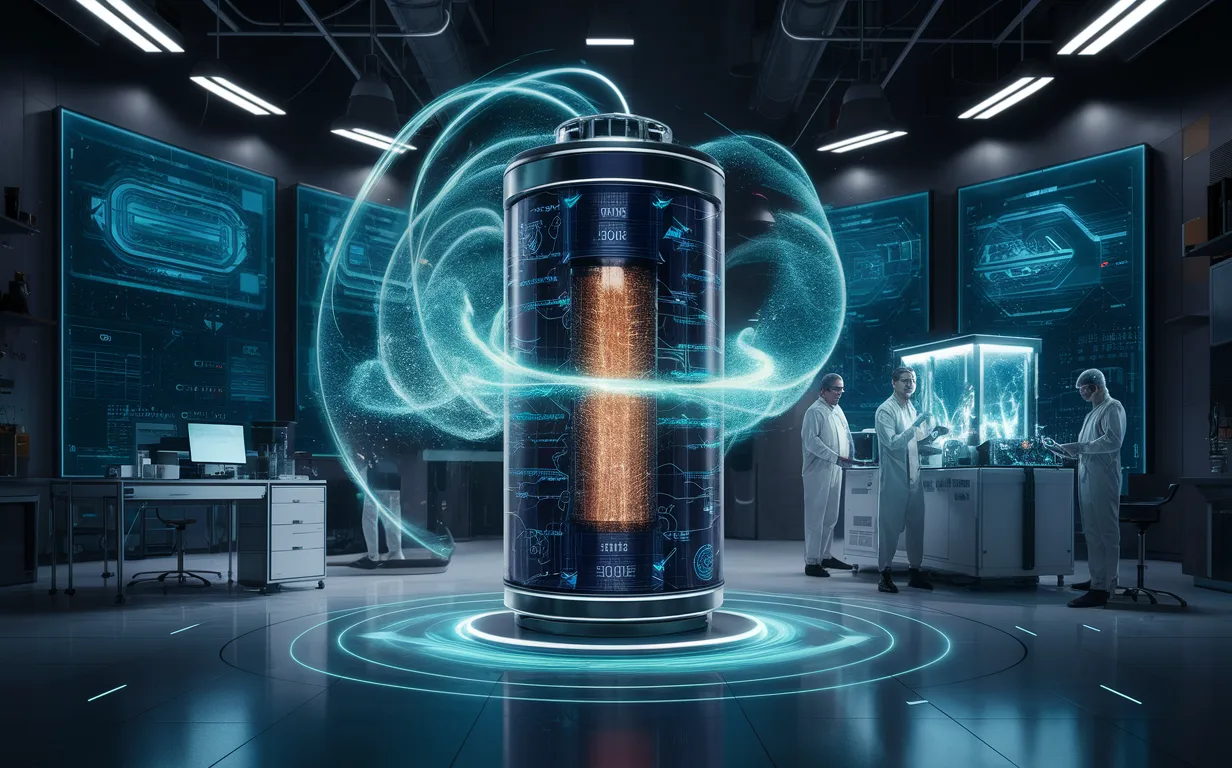Physical Address
304 North Cardinal St.
Dorchester Center, MA 02124

New Battery Technology crucial for renewable energy and electric vehicles. Advancements like solid-state and lithium-sulfur batteries promise faster charging, longer range, and improved safety. These innovations are on the horizon and will revolutionize transportation, grid stability, and sustainabilit.

In a world increasingly focused on sustainability and clean energy, battery technology stands as a key battleground. As we transition towards renewable energy sources and electric vehicles, the limitations of current battery technology become ever more apparent. But fear not, innovation is on the horizon! This article dives into the exciting world of new battery advancements, exploring the contenders leading the charge towards a brighter future.
The rise of renewable energy sources like solar and wind power brings a unique challenge: storing this intermittent energy. Furthermore, the electric vehicle revolution hinges on overcoming the limitations of current battery range and charging times.
While lithium-ion batteries have powered our portable electronics for decades, they have shortcomings:
Electric vehicle range suffers compared to gasoline-powered counterparts.
Refueling an electric car takes significantly longer than filling a gas tank.
Lithium-ion batteries pose a potential fire risk under certain conditions.
The scientific community is actively exploring solutions, with several promising contenders emerging:
Solid-state batteries address the safety concerns of lithium-ion batteries by replacing the flammable liquid electrolyte with a solid material. This innovation unlocks several benefits:
Solid-state batteries promise significantly faster charging times.
They boast a longer lifespan compared to traditional lithium-ion batteries.
The solid electrolyte eliminates the risk of fires associated with liquid electrolytes.

Lithium-sulfur batteries hold immense potential due to their high theoretical energy density, which translates to a longer range for electric vehicles. However, challenges remain:
Addressing the degradation of sulfur electrodes during charging and discharging cycles is crucial.
Improving the efficiency of these batteries requires further research.
Sodium-ion batteries offer a compelling alternative:
Sodium is a much cheaper and more abundant material than lithium.
Sodium-ion batteries offer a more environmentally friendly alternative due to the readily available materials.
The search for the perfect battery extends beyond lithium. Here are two interesting possibilities:
These batteries boast long lifespans and are environmentally friendly, but require further development to improve energy density.
These batteries are ideal for large-scale energy storage applications due to their scalability and safety features. However, they may not be suitable for powering portable electronics.
While the future of battery technology is bright, there are hurdles to overcome:
Ensuring ethical sourcing of battery materials is crucial for a sustainable future.
Minimizing the environmental footprint of battery production processes is essential.
Developing cost-effective manufacturing processes will be key to widespread adoption of new battery technologies.
The advancements in battery technology hold immense potential to revolutionize various sectors:
New battery technology will pave the way for longer-range, faster-charging electric vehicles, making them a more viable and attractive option for consumers.
Efficient energy storage solutions will enable a seamless integration of renewable energy sources into the power grid, promoting stability and sustainability.
New battery technology will play a crucial role in reducing our reliance on fossil fuels and creating a cleaner, more sustainable future.

The quest for the perfect battery is a continuous journey, but the advancements discussed here paint a hopeful picture for the future. New battery technologies have the potential to revolutionize our world, ushering in an era of clean energy dominance. From extended-range electric vehicles to efficient grid-scale energy storage, these innovations pave the way for a more sustainable and secure energy future.
The road ahead requires continued research, addressing production challenges, and ensuring ethical and sustainable practices. However, with ongoing dedication and collaboration, these hurdles can be overcome. By embracing innovation, we can unlock the immense potential of new battery technology and build a brighter future for generations to come.
A: The timeline for commercialization varies depending on the technology. Solid-state batteries are still in the development stage, with estimates suggesting potential availability within the next 5-10 years. Lithium-sulfur and sodium-ion batteries may reach the market sooner, potentially within the next 2-5 years.
A: Safety is a top priority in battery development. Solid-state batteries, with their non-flammable electrolytes, address fire risks associated with lithium-ion batteries. However, ongoing research and testing are crucial to ensure the safety of all new battery technologies.
A: The long-term goal is for these technologies to contribute to a cleaner environment. Utilizing renewable energy sources for powering electric vehicles and integrating renewable energy into the grid will significantly reduce our reliance on fossil fuels. Sustainable sourcing of materials and eco-friendly manufacturing processes are also crucial considerations for a truly sustainable future.
A: Numerous resources are available! Follow reputable science news websites or publications dedicated to clean energy technology. Many research institutions and companies developing new battery technologies have informative websites and social media presences that share updates on their progress.